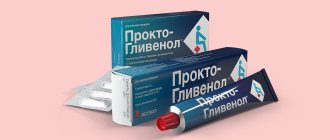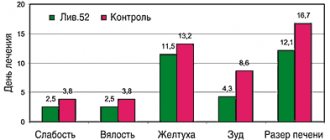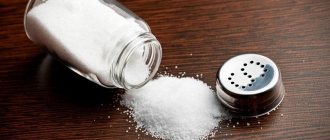Accumulation of mucus in the throat is an unpleasant but treatable condition. The main thing is to accurately determine the cause of this symptom and eliminate it. That is, a condition in which mucus collects in the throat is not an independent diagnosis, but one of the manifestations of the underlying disease. Phlegm in the throat can accumulate not only due to inflammatory processes in the nasopharynx. There are other reasons not related to ENT organs. Which? Read our new article.
The accumulation of mucus in the throat is a very unpleasant condition, especially in cases where it accumulates constantly, and the person cannot leave the feeling that there is something in the throat.
In medicine, there is even a special term that is used when mucus constantly flows into the throat from the nasal cavity - postnasal drip. Essentially, it's the same runny nose, but in reverse.
When mucous discharge from the nose does not come out, but inward, it irritates the walls of the pharynx and causes a person to have an irresistible desire to frequently cough up and swallow phlegm. This state, of course, cannot be called pleasant. To get rid of it, you first need to determine why mucus accumulates in the throat, which system of the body has failed, and carry out proper treatment of the disease. Unfortunately, you won’t be able to do this yourself. We need the help of a qualified otolaryngologist.
So why does mucus accumulate in the throat? The causes and treatment of this condition are the topic of our new article.
Why is mucus formed?
The production of mucous masses by the nasopharynx is a natural phenomenon. They perform a moisturizing and protective function. Mucous masses trap foreign particles, pollen, and bacteria that enter with the air and prevent them from descending lower into the trachea and lungs. As soon as these foreign agents enter the mucous membranes, the amount of secretion produced increases, and the person has a desire to clear his nose or cough. When the irritant is removed from the body, secretion production returns to its previous level.
Normally, a person does not notice the process of formation of mucous masses - they are swallowed along with saliva.
The accumulation of mucus in the throat becomes noticeable when it is produced continuously and thickens. The patient directly feels how mucous masses flow along the back wall of the pharynx and accumulate in it. During the daytime, the accumulation of sputum is not so disturbing - it is swallowed and does not greatly irritate the cough receptors. But if you take a horizontal position, for example, at night while sleeping, the mucous masses cannot freely pass inside and stagnate in the throat. This causes severe coughing attacks, which can even provoke vomiting.
When a person comes to an otolaryngologist and says: “I constantly swallow mucus in my throat,” the first thing the ENT doctor will do is find out why mucus accumulates in the throat.
Only after establishing the true cause of mucus in the throat, it will be possible to prescribe the correct treatment.
Causes of postnasal drip
The causes of constantly accumulating mucus in the throat can be infectious or non-infectious. These include:
- Inflammatory diseases of the nasopharynx and larynx (sinusitis, pharyngitis, laryngitis). The increased production of mucous secretion during this period is associated with the body’s attempt to clear the airways of bacteria and viruses, thereby speeding up recovery. The fact that mucus is secreted abundantly in this case, on the contrary, is a variant of the norm. Such mucous masses do not interfere, but help get rid of pathogens.
- Chronic diseases of the upper respiratory tract. These diseases cause inflammatory processes in the nasopharynx, resulting in the formation of a constant source of infection here.
- Diseases of the lower respiratory tract (bronchitis, pneumonia, tuberculosis).
- Allergic reactions to an external irritant. An allergy can be accompanied by a copious accumulation of phlegm, which is annoying and makes you want to constantly swallow it.
- Disorders of the gastrointestinal tract, in which the contents of the stomach are thrown back into the esophagus and further into the pharynx (gastroesophageal reflux disease, gastritis, ulcer).
- Features of the structure of the nasal cavity (curved nasal septum, enlarged nasal turbinates).
- Adenoids.
- Poor nutrition - eating too fatty or spicy foods irritates the gastrointestinal tract and can provoke increased secretion production.
- Bad habits. Tobacco smoking and alcohol abuse lead to burns of the pharyngeal mucosa. The body tries to get rid of the harmful effects of harmful substances by intensively producing mucous masses.
- The entry of foreign objects into the nasal cavity is a common cause of the accumulation of mucous masses in the throat of children, since children, while playing, can insert beads, small parts of toys, etc. into the nasal passages.
- Poor environmental conditions in the place of residence - polluted air and dust. In this way, the body tries to get rid of harmful particles trapped in the air.
The sooner the cause of this condition is determined, the sooner effective treatment for the throat will be prescribed and carried out.
Use of defoamers in pediatric practice
The problem of gas formation (flatulence) and gas separation (flatulence) in children and adults is perhaps one of the most pressing in recent times.
On average, a healthy person emits 0.5–1.5 liters of gases in 13–15 passages per day. Gases in the intestinal lumen are formed as a result of fermentation processes, under the influence of pancreatic and intestinal enzymes, with the active participation of microflora in these processes. Under conditions of prevalence of symbiont microorganisms in the intestine, slow fermentation processes occur, during which most of the gases manage to be absorbed through the intestinal wall and are subsequently excreted from the body by the lungs. With excessive growth of conditionally pathogenic aerobic flora, putrefactive reactions begin to occur in the intestines, causing increased gas formation. Flatulence (bloating as a result of the accumulation of gases in the intestines) is one of the manifestations of the so-called “lower” dyspepsia. It is worth recalling that the cause of excess gas formation in the intestines is various endo- and exogenous factors. The first of them includes disruption of the functioning of the gastrointestinal tract itself, the mechanisms of bile secretion and enzyme formation. Weakening of intestinal motility due to a sedentary lifestyle, excess weight and, accordingly, increased pressure on the intestines, a possible adhesive process after abdominal surgery in the follow-up can lead to a slowdown in the passage of chyme through the intestines, causing activation of putrefactive processes, which leads to excessive gas formation . Violation of the processes of bile formation and (or) bile secretion causes, in turn, a decrease in the emulsification of fats in food masses; undigested fats enter the intestinal lumen, where they become a good nutrient medium for many symbiont or opportunistic microorganisms. With the development of bacterial overgrowth syndrome, fermentation processes actively occur with the formation of large amounts of gases. Almost the same thing happens with enzyme deficiency of the pancreas or intestines - undigested food remains are also a favorable factor for excessive growth of microorganisms.
Exogenous causes of increased gas formation in the intestines can be foods consumed that are themselves in a state of fermentation (kvass, beer) or stimulate these processes in the intestines - brown bread, legumes, plant fibers, some types of meat. Eating in a hurry or talking while eating, bad habits such as smoking and chewing gum can also cause flatulence. In infants, improper breastfeeding technique or incorrectly selected diameter of the hole in the nipple can lead to the child actively swallowing air during feeding. In addition, the cause of swallowing excess air during feeding can be congenital anomalies and malformations (cleft palate, cleft lip) or colds, inflammatory or allergic rhinitis. In all these conditions, air is swallowed. Swallowed air can become an independent cause of flatulence, but, in addition, it causes the death of anaerobic microorganisms, which leads to the development of dysbiosis and increased flatulence phenomena.
Flatulence can be combated in various ways, primarily by influencing the factors that cause it - restoring intestinal motility, compensating for fermentopathy and/or treating bile formation and bile excretion disorders. It is necessary to adjust the diet, removing from it foods that stimulate increased gas formation, and restore the symbiont microflora using intestinal antiseptics and probiotics.
Finally, to help the patient (remove excess gas from the intestinal lumen), special groups of drugs are used - prokinetics, which enhance peristalsis and, accordingly, the rapid removal of contents (including gases) from the intestine, adsorbents that actively capture (adsorb) a large amount of toxins, gases and remove them from the body.
What do defoamers have to do with it and how do these drugs help treat flatulence?
The thing is that most of the gas mixture located in the intestinal lumen is presented in the form of fine-bubble foam, covering a large area with a dense layer of the intestinal mucosa. With the passage of a peristaltic wave, other contractions of the intestine, or active movements of a person, the mucus covering the mucous membrane becomes even more carbonated, the foam whips up even stronger, often filling the entire lumen of the intestine. Since the mucus of the intestinal mucosa is quite viscous, once formed fine-bubble foam does not disappear for a long time, does not settle, an ever-increasing volume of the foamy mass can “overinflate” the intestine, stretching the mesentery, causing pain. Moreover, in children, whose pancreatic enzyme system differs from adults, foaming processes occur faster and more intensely. Foam accumulating in the intestinal lumen can not only cause discomfort and pain. Covering the intestinal mucosa with a dense layer, it thereby interferes with parietal digestion and the normal process of absorption of nutrients through the intestinal wall.
To reduce the volume of gases in the intestinal lumen and reduce foaming processes, defoamers are used. Drugs in this group include Espumisan®. The action of Espumisan® is based on the release of gases from mucous vesicles. The drug, entering the intestinal lumen, is redistributed over the surface of almost the entire intestine within a very short time, covering every bubble of foam. Espumisan® changes the surface tension of the mucus that forms these bubbles, causing the gas contained in the bubble to be released. Foam deposition reduces the total volume of gases in the intestinal lumen, restores the natural absorption of gases through the intestinal wall, accelerates intestinal transit and increases the cumulative excretion of gases. The main active ingredient of Espumisan® is simethicone. Simethicone does not dissolve in water or ethyl alcohol, does not change its structure and properties under the influence of oxidizing agents and high temperatures, and is resistant to any microorganisms. Simethicone is excreted from the body unchanged, without being absorbed through the intestinal wall, without affecting the functioning of the liver and kidneys, without disturbing the intestinal microbiocenosis. It does not in any way affect the metabolism of proteins, fats or carbohydrates, and does not interfere with the absorption of vitamins, minerals and trace elements. It can be used for a long time without any adverse reactions. Thanks to the unique structure of simethicone, which is the basis of the drug Espumisan®, the effect of its use occurs very quickly - within a few minutes, excess gases formed are absorbed through the intestinal wall or exit the body naturally, bringing relief to patients.
However, an excessive amount of foam in the lumen of the gastrointestinal tract can cause trouble not only for patients suffering from excessive gas formation. When conducting various diagnostic studies or therapeutic instrumental manipulations, an excessive amount of foam can cause significant difficulties when carrying out visual (endoscopic) or instrumental (ultrasound, x-ray) diagnostics, not to mention carrying out any therapeutic manipulations (Fig. 1).
In addition, during an endoscopic examination, air or a special inert gas mixture, carbon dioxide, is actively supplied through the endoscope to ensure adequate examination of the mucous membrane of various parts of the gastrointestinal tract. Mixing with mucus, bile or blood located in the lumen of a hollow organ, this gas mixture can very quickly form abundant foam that covers the entire field of vision.
In addition, one cannot help but take into account the fact that endoscopic examinations, no matter the purpose for which they are performed, often cause psychological trauma for the subject. For this reason, lengthening the duration of the examination (often unjustified, due to the impossibility of a full examination due to the presence of foam) can serve as an additional traumatic factor.
And one more fact that cannot be ignored: lengthening the examination time leads to increased wear of expensive endoscopic equipment and its premature failure.
To remove foamy contents during endoscopic examination, various defoamers are used that reduce the surface tension of gas bubbles, including ethanol solution. However, despite the good positive effect, the method has a significant drawback - the endoscopist is not always able to quickly and completely evacuate the excess amount of ethanol from the lumen of the hollow organ, and it can be absorbed into the body, thus, this method is unacceptable when performing endoscopy in children.
In this case, irrigation of the mucous membrane is used directly during endoscopic examination through the instrumental channel or using a special spray catheter with a solution of the drug Espumisan®. For endoscopic examinations, the emulsion Espumisan® 40 and Espumisan® L with a dilution of 1:2 or 1:5 is usually used.
To evaluate the effectiveness of using antifoam agents during endoscopic examination in children of different ages, we used an algorithm for preparing the mucous membrane [3].
We examined 169 children aged 2 to 15 years who underwent esophagogastroduodenoscopy (EGD). There were relatively equal numbers of boys and girls (80 and 89, respectively). The distribution by age groups was determined as follows: children from 2 to 5 years old - 23 people, from 6 to 10 years old - 68 people, and aged 11-15 years there were 78 children. Indications for EGDS were various complaints of abdominal pain, dyspeptic symptoms, or conducting a control study in children with chronic diseases of the gastrointestinal tract.
All children received Espumisan® before the study. Children up to 5 years of age inclusive - Espumisan® L 1 ml 3 times a day the day before the test and 20 minutes before the test - 1 ml. Children of other age groups took Espumisan® 40 emulsion 5 ml 3 times a day on the eve of the study and 5 ml 20 minutes before the study.
The control group consisted of 32 children aged 3 to 16 years who did not take Espumisan® in preparation for endoscopy.
During endoscopy, all children in the presence of foamy contents in the lumen of the gastrointestinal tract were irrigated with Espumisan® 40 emulsion in a 1:5 dilution in a volume of 10–30 ml, depending on the degree of foaming, through a spray catheter.
As a result of the studies, it was shown that children taking Espumisan® L or Espumisan® 40 in preparation for the study had a very good examination quality (Fig. 2). Only one child aged 4 years and two children aged 9 and 13 years required irrigation with the drug during the study.
In the comparison group, 26 (81.3%) of 32 children had foamy contents of varying degrees in the lumen of the stomach and/or duodenum, which had to be removed by irrigating the mucous membrane with an emulsion of the drug Espumisan®. After irrigation with Espumisan® emulsion, the foamy contents disappeared almost instantly upon contact with the irrigating liquid (table).
Thus, defoamers are highly effective medicines for the treatment of diseases accompanied by increased gas formation in the intestines. They can be successfully used in children, even infants, pregnant women and nursing mothers. Widespread clinical application of a diagnostic algorithm based on the method of preparation for endoscopic examination using the drug Espumisan® 40 and Espumisan® L, increases the methodology of endoscopic examination of the gastrointestinal tract, and can significantly improve the visualization of the mucous membrane of various parts of the digestive organs and changes in the mucous membrane.
Literature
- Diseases of the digestive system: A guide for doctors (edited by A. V. Mazurin). M., 1984; 655.
- Frolkis A.V. Functional diseases of the gastrointestinal tract. L.: Medicine, 1991. 224 p.
- Shcherbakov P. L., Kashin S. V. Possibilities of endoscopy in the diagnosis of pretumor pathology and early gastric cancer associated with H. pylori infection // Pediatrics. 2002, No. 2. Appendix. pp. 51–53.
- Samedov B. Kh. Recommendations for the use of Espumisan during endoscopic examinations of the gastrointestinal tract and transendoscopic manipulations. Military Medical Academy, Department of Gastroenterology. A textbook for students of the I and VI faculties of the Academy, endoscopists. St. Petersburg, 2002.
- Chevalier T., Rene E., Bonfils S. Somatostatine et secretion acide gastrique // Gastroenterol. Clin. Biol. 1986, v. 10, No. 1. P. 34–40.
- Franchini F. Brizzi. Il pediatra ed il bambino con malattia psicosomatica: alcune riflessioni // Pediatr. Med. Chir. 1994. Vol. 16. No. 2. P.155–157.
- Rasquin-Weber A., Hyman PE, Cucchiara S., Fleisher DR, Hyams JS, Milla PJ Staiano Childhood functional gastrointestinal disorders // Gut. 1999. Vol. 45. Suppl. 2: P. II60-II68.
- Scott RB Recurrent abdominal pain during childhood // Can. Fam. Physician. 1994. Vol. 40. P. 539–547.
- Staiano A., Del Giudice E. Colonic transit and anorectal manometry in children with severe brain damage // Pediatrics. 1994. Vol. 94. No. 2, Pt 1. P. 169–73.
- Van Outryve M., Milo R., Toussaint J., van Eeghem P. “Prokinetic” treatment of constipation-predominant irritable bowel syndrome: a placebo-controlled study of cisapride // J. Clin. Gastroenterol. 1991. Vol. 13. No. 1. P. 49–57.
P. L. Shcherbakov*, 1, Doctor of Medical Sciences, Professor N. D. Chernova** B. A. Medvedev**
* GBUZ TsNIIG DZM, ** Federal State Budgetary Institution "Children's Clinic" Department of the President of the Russian Federation, Moscow
1 Contact information
Symptoms
When mucous masses constantly “stand” in the throat, the patient wants to swallow them. Such actions (if the secretion is too thick) can cause vomiting and nausea. This condition usually occurs in parallel with other characteristic signs that patients complain about when visiting an ENT doctor:
- sore throat;
- a feeling of a lump in the throat that cannot be gotten rid of;
- a constant desire to cough, although the cough does not bring relief; coughing attacks are especially severe at night;
- discomfort when swallowing food;
- bad breath caused by pathogens multiplying in the throat;
- swollen lymph nodes;
- Loud snoring.
To understand how to treat a sore throat, you need to consult an ENT doctor to determine the cause of postnasal drip.
There is a lump in the throat: reasons
Many people feel a lump in their throat after eating, the reasons for this may lie in:
- formation of an abscess in the pharynx,
- formation of neoplasms,
- pathologies of the thyroid gland,
- dysfunction of the cervical spine.
If you feel a lump in your throat with nausea, the reasons for this most often lie in diseases of the gastrointestinal tract.
Signs such as pain when swallowing, a feeling that a foreign object is stuck, suffocating and causing other types of discomfort are observed:
- with gastritis;
- with reflux esophagitis;
- when a hernia forms in the esophagus.
In addition to the fact that there is a lump in the throat, patients are often annoyed by:
- pain in the chest in the center or right, particularly in the esophagus, with difficulty swallowing and breathing;
- belching after eating;
- severe heartburn;
- heaviness in the stomach;
- nausea;
- feeling that there is air in the stomach;
- an unpleasant sour taste in the mouth and a sore throat provoked by it.
Sign up for the First Family Clinic of St. Petersburg to find out how to get rid of a lump in your throat. We offer you a full range of diagnostic measures and consultations with high-level gastroenterologists, thanks to which we can accurately determine the reasons why there is a lump in the throat. We are waiting for you at the multidisciplinary clinics of the Primorsky and Petrograd districts.








